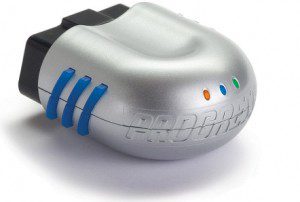This is part two of a two-part series on how leading retailers are leveraging IoT technology to drive business (originally posted here). Part one focuses on examples of external (customer-facing) use cases and can be found here on Wearable World News where it was originally posted.
Enterprise Examples of IoT in Retail Leverage the Insights & Efficiency Initially Gained in e-Commerce
As we’ve seen in e-Commerce, retailers’ use cases transcend marketing. Retailers are also using sensors, beacons, scanning devices, and other IoT technologies to optimize internally: inventory, fleet, resource, and partner management through real-time analytics, automatic replenishment, notifications, store layout, and more. The result? Big data now affords retailers a factual understanding of how their products, customers, affiliates, employees, and external factors come together. Altogether, this is a $1.6T opportunity for retailers, with $81B in value already realized in 2013, according to Cisco.
Internal Use Cases Inform Business Intelligence with Little Customer Interaction Required
Many organizations are already using Big Data for unified supply chain management and resource allocation, and in the future will apply IoT to use cases around workforce, store layout/traffic, and compliance optimization. Sometimes these use cases interface with customers, sometimes they don’t.
- Starbucks Develops Clover Smart Coffee Machine to Drive Deeper Business Intelligence
Starbucks is sticking its toe into the hardware space, having developed and recently deployed more than 500 Clover, a ‘smart’ coffee machine. These connected coffee machines connect to the cloud and, through integrating MyStarbucks loyalty program, tracks customer preferences down to the individual level. Through these machines, Starbucks is also tracking customer and store consumption patterns, inventory, employee performance, and staffing data. While some of this data may inform marketing efforts, business intelligence is the primary goal. In fact, in the next year, Starbucks hopes to connect more of smart hardware (think smart refrigerators and POS systems) to the larger Clovernet, its internal cloud to support product quality, sales, and lower maintenance costs.
- Wal-Mart Tracks Inventory for Real-Time Resource Allocation and Replenishment
Wal-Mart has tracks inventory for more accurate supply chain management. When a product is scanned, an update is sent to the inventory system as well as suppliers’ systems assessing when it is time to restock the inventory, and by how much (instructing labor needs). These updates drive cost-savings and revenue for the retail behemoth both in predicting the need for labor and eliminating time when products are out of stock. Wal-Mart was one of the first major retailers to deploy smart tagging for inventory tracking, beginning in 2010.
- Progressive’s Snapshot Quantifies Risk, Incentivizing Safe Drivers with Lower Premiums
A good example of how IoT can drive can shift a consumption model is Progressive Insurance’s Snapshot program, where drivers mount a Progressive-provided device in their cars to track speed, location, driving habits and the number of people in the car. In exchange for this amount of sensitive data, Progressive provides a discounted policy rate based on actual use. By tracking how hard drivers brake, for instance, or the typical time of day the driver uses the car, Progressive is able to more accurately connect the lower premiums to safer drivers, based on a quantifiable [actual] risk profile. The result of this, in theory, is higher profitability on more risky drivers, and lower pricing for safer driving. To date, Progressive touts more than a million individual policy-holders have saved money because of Snapshot.
Bringing E-Commerce to the Brick and Mortar Creates an Explosion of Customer Touchpoints
This real significance of IoT in retail is it creates a proliferation of customer touchpoints, exploding outwards in all directions what we think of as a traditional marketing funnel. In other words, what IoT enables through the use of sensors is for most anything— from our smartphones to the store shelves to door hinges to a box of cereal— to serve as a touchpoint, or anchor of context. The following image, taken from a Cisco presentation at this year’s National Retail Federation Show in January 2014, illustrates this explosion:
“We are creating a connected world with entirely different touch points,” explains Glen Allmendinger, president of Harbor Research, a business consulting firm specializing in IoT. “In the past, a company would sell a product, and it would disappear into a black hole. There was no way to know what anyone did with it or what other marketing opportunities existed. Today, it’s possible to see how a customer uses a device and discover all sorts of opportunities.”
As a result, retailers must put on a new lens to understand this landscape, to understand how these touchpoints can improve their customers’ experiences, inform operational intelligence and efficiency, and ultimately drive the bottom line. This is less about technology, as ultimately the technology should become invisible to the experience, and more about what technology can reveal to serve the enterprise and the customer at once.
—-
This was a two-part post, with the second post focusing on internal-facing examples and the first focusing on external (customer-facing) examples. Access Part 1 of this two-part series here.




